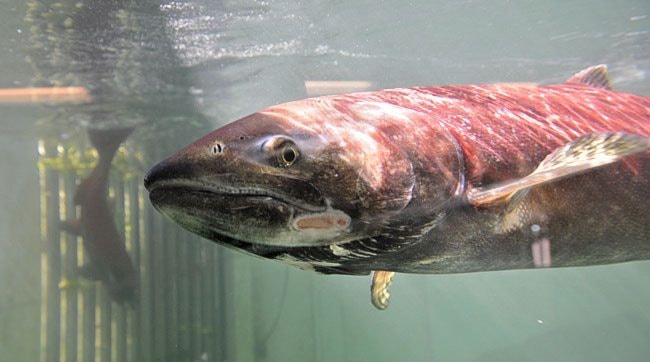The Yukon First Nation harvest of chinook salmon is at its lowest point in over 35 years.
The Department of Fisheries and Oceans estimates that the First Nation fisheries will have harvested about 1,500 chinook this year, although the numbers have not been finalized.
That is the lowest reported number since 1976, when First Nations caught 1,025 fish.
The average harvest over the last 50 years was about 5,500 fish.
A full, unrestricted First Nation fishery allows for an estimated 8,000 fish to be caught.
All of the chinook that will make it over the border this year have done so by now.
The total count at the Eagle sonar counter, just below the border, was 35,104 fish.
Under a treaty between Canada and the United States, 42,500 fish are supposed to make it past all of the fishing boats to their spawning streams.
That means that the Americans must strive to allow that many fish to pass the border, plus enough for a fair share of the harvest for the Yukon’s First Nations.
This is the fourth year of the last six where the spawning goal has not been met.
The Americans restricted access to the chinook by limiting the openings where subsistence fishing was allowed on the river.
Many of the Yukon’s First Nations, too, urged their members to fish conservatively.
They apparently have heeded the call.
At a meeting in July, the chief of the Little Salmon/Carmacks First Nation told his community to hold back.
“This is a highly critical time of what to do,” Eddie Skookum said. “There’s only so much salmon coming down. It’s very, very low. We may not even get anything. But the fact of the matter is, if we want to see salmon tomorrow, we have to do our part today.”
He said he hoped the other First Nations along the Yukon River would follow suit.
Robert Moar, the director of lands and resources for the Carmacks-based First Nation, said this week that very few fish were caught by its members this year.
“There were less people fishing, and they didn’t fish as long.”
For example, a fish camp that regularly brings in 300 fish might have caught 60 this year.
The total harvest numbers for the First Nation have not been finalized.
Now, the fall chum run has started coming over the border, and unlike the chinook, the run is looking quite strong.
By Aug. 26, 556 chum had reached the Eagle sonar counter. The first fish arrived only four days before that.
The total run of fall chum entering the Yukon River this year is estimated to be 1.3 million.
About 30 per cent of those fish are headed for Canada.
The run is expected to be so strong, in fact, that a commercial opening is planned for this weekend.
The chum, however, do not substitute easily for the chinook.
They are often called dog salmon because they are typically harvested to feed dog teams. They are smaller, tougher, and have less fat content.
They are also harder to harvest, Moar said, because the fishing occurs late in the season, when the weather is colder and more difficult.
Contact Jacqueline Ronson at
jronson@yukon-news.com
